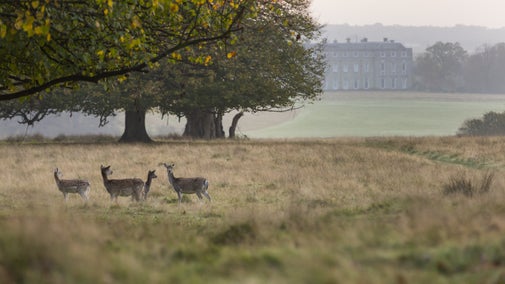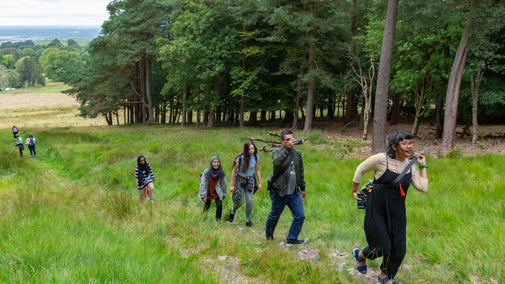Saddlescombe Farm and Newtimber walk
Sussex
Fresh air, views and an ancient landscape will accompany you along this scenic downland walk near Devil's Dyke, West Sussex. Discover the wildlife-rich dewpond, and catch a glimpse into the past when you visit the old Donkey Wheel, traditionally used to draw water for the farm.
Start point
National Trust 'Newtimber Hill' sign, grid ref: TQ272115Trail information
More near here
Estate walk at Sheffield Park
Explore the wider Sheffield Park estate and discover the historic and natural importance of this piece of Sussex countryside.

Petworth ancient trees walk
Discover more about the ancient trees that dominate the skyline of Petworth on this circular walk in Sussex.

Bounding up to Belle Tout at Birling Gap
Enjoy a relaxing stroll up to Mad Jack Fuller's folly on this circular walk which offers breathtaking views of the Seven Sisters and Beachy Head lighthouse.

Devil's Dyke histories and mysteries walk
A good three mile walk which takes you to the alleged burial site of the Devil and beyond to Saddlescombe Farm and the donkey wheel.

Get in touch
Saddlescombe Road, near Brighton, West Sussex, BN45 7DE
Our partners

We’ve partnered with Cotswold Outdoor to help everyone make the most of their time outdoors in the places we care for.
You might also be interested in
Walking in Sussex
Explore coastal paths, open parkland and countryside teeming with wildlife on these top walks in Sussex.

Follow the Countryside Code
Help to look after National Trust places by observing a few simple guidelines during your visit and following the Countryside Code.

Cotswold Outdoor: our exclusive walking partner
Learn about the National Trust’s ongoing partnership with Cotswold Outdoor. Find out how they help us care for precious places and the exclusive discount available for National Trust supporters.

Staying safe at National Trust places
The special places in National Trust care sometimes come with a few risks for visitors, be it coastline or countryside. Find out how to keep safe throughout your visits.

Walking
Explore some of the finest landscapes in our care on coastal paths, accessible trails, woodland walks and everything in between. Find the best places to walk near you.

